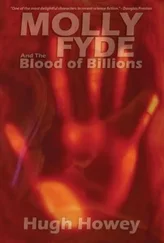The fact that both Zenith and Floral Heights are fictional settings does not necessarily imply that through their being fictional, the author sought to create a literary embodiment of the average city or suburb in order to stylise and satirise it. In fact, Lewis was critical enough of the phenomenon of mediocrity in real places and did not need a fictional setting to caricature it. Despite his satirisation of Zenith as the epitome of mediocre and conformist America, the reason behind his choice of a non-existent setting is rooted in the negative response he received from residents for his depiction of a real town in Main Street (Fleming 683). Following this response, the author developed the state of Winnemac, including its largest town Zenith, in his subsequent novels, and envisioned it as “more typical than any real state in the Union, and in one book after another [he] would describe the representative activities of its inhabitants, until he had completed a wide survey of American society” (Cowley 168).
The fact that Lewis did not need to invent a fictional city in order to stylise and exaggerate its features does not mean that he failed to take advantage of this opportunity, however. Zenith’s urban zones, as well as its suburban belt, are well-defined and clear-cut to such an extent that they seem to have been designed with a straightedge, or taken out of a textbook. As a case in point, the suburban belt depicted in Babbitt is situated in the immediate vicinity of the core city, and Babbitt’s house is located only a few miles from the office towers in the centre, but there are highly obvious visual boundaries. Generally speaking, Zenith is a place that is shaped by stark aesthetic contrasts: it has a modern shiny business district at its core – the destination of Babbitt’s daily commute –, decaying or derelict old structures surrounding its core, as well as new suburban houses at its fringes.
The importance of the setting and its contrasting architecture is emphasised in the opening lines of the novel, as the environment and its built structures are the first details to which the reader’s attention is drawn. The narrator draws a picture of how “[t]he towers of Zenith aspired above the morning mist; austere towers of steel and cement and limestone, sturdy as cliffs and delicate as silver rods. They were neither citadels nor churches, but frankly and beautifully office-buildings.” With nature as an agent in its interaction with architecture, “[t]he mist took pity on the fretted structures of earlier generations: the Post Office with its shingle-tortured mansard, the red brick minarets of hulking old houses, factories with stingy and sooted windows, wooden tenements colored like mud.” As far as old, fretted structures are concerned, “[t]he city was full of such grotesqueries, but the clean towers were thrusting them from the business center, and on the farther hills were shining new houses, homes – they seemed – for laughter and tranquillity” (1). Hence, Lewis not only establishes the importance of the setting through its detailed description in the opening paragraphs, but he also emphasises the relationship between the different urban and suburban neighbourhoods in terms of their historical development, as well as their architectural and social demarcations. The mighty, modern and overpowering towers of the financial district clash with the derelict architectural remnants of an earlier time, a time which was determinately more industrial and less business-oriented. While the perceived clean architectonic beauty of the modern business district rises proudly above the mist into visibility, the decaying and unsightly “structures of earlier generations” are suppressed into invisibility. Similarly rising above the mist are the suburban houses on the hills into which businessmen retreat after a day of work spent in the austere concrete towers in the centre. Therefore, the idea of physical and topographical verticality as a marker of achievement and success is emphasised in the image of the high-rise and the well-to-do suburb on the hill, that is, in structures and environments which overlook the industrial past that slides into obscurity.
The Reciprocity Between Architecture, Design, Commodities and Character
One of the polished new houses on the suburban hills overlooking the city, removed from architectural grotesqueries as well as sterile high-rises, is the home of the Babbitt family, a green and white Dutch Colonial. It is a respectable yet indistinguishable home, mirroring the respectableness and indistinguishability of George F. Babbitt as a character: “He was not fat but exceedingly well fed […]. He seemed prosperous, extremely married and unromantic; and altogether unromantic appeared [his] sleeping-porch, which looked on one sizable elm, two respectable grass-plots, a cement driveway, and a corrugated iron garage” (2). In fact, many aspects of the house are a reflection of Babbitt’s character, or at least a reflection of his perception of himself. He sees, for instance, the perfection of his yard, and attributes this sophistication to himself; his yard is that of a successful Zenith businessman, and through its perfection, it makes him perfect, too.
Paralleling the fact that Babbitt’s character is mirrored in his home, his immediate neighbours, the Doppelbraus and the Littlefields, are mirrored in their architectural habitat, too. The Dopplebraus, whom Babbitt disapprovingly considers a bohemian couple, own “a comfortable house with no architectural manners whatever; a large wooden box with a squat tower, a broad porch, and glossy paint yellow as yolk” (24). Similar to the architectural appearance of their house being somewhat out of place in Lewis’ suburban setting, their life is “an eternal cabaret […] dominated by suburban bacchanalia of alcohol, nicotine, gasoline and kisses” (339). The more sophisticated and academic Littlefields, in contrast, live in a more sophisticated home that matches their social standing, “a strictly modern house whereof the lower part was dark red tapestry brick, with a leaded oriel, the upper part of pale stucco like spattered clay, and the roof red-tiled” (25).
In contrast to the variety encountered in the exterior appearance of houses, standardisation of the interior is a rule that everyone adheres to in Floral Heights, as, for example, observed in the décor of the luxurious bathrooms of the suburb. Despite its moderate size, Babbitt’s house, like all the other houses in Floral Heights, has “an altogether royal bathroom of porcelain and glazed tile and metal sleek as silver,” and further design details are similarly regal in appearance: “The towel-rack was a rod of clear glass set in nickel. The tub was long enough for a Prussian Guard, and above the set bowl was a sensational exhibit of tooth-brush holder, shaving-brush holder, soap-dish, sponge-dish, and medicine-cabinet, so glittering and so ingenious that they resembled an electrical instrument-board” (5). The interior design of the royal bathroom, determined by the religion of “Modern Appliances” (5), is an exaggerated and blatantly disproportionate display of wealth. It is disproportionate in comparison to the size of the house and Babbitt’s income, but the bathroom is a part of the home that is particularly suitable for design-related exaggeration due to its limited space. Nevertheless, despite its royal appearance, Babbitt’s bathroom is indistinguishable from other examples in Floral Heights. This room is standardised to a great degree, so that it is turned into a benchmark for the accumulation of material goods and appliances, and, as a consequence, it marks social rank. Failing to meet a certain dictated design standard would cause suburbanites to feel socially inferior to their neighbours, even though the bathroom is a private realm to which outsiders are often denied access.
Читать дальше











